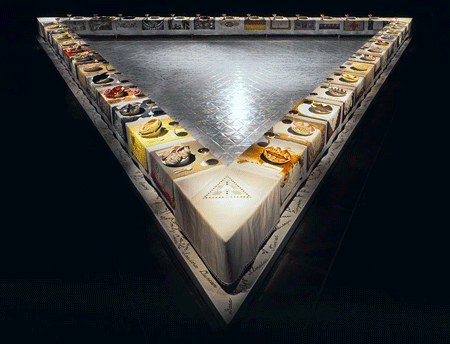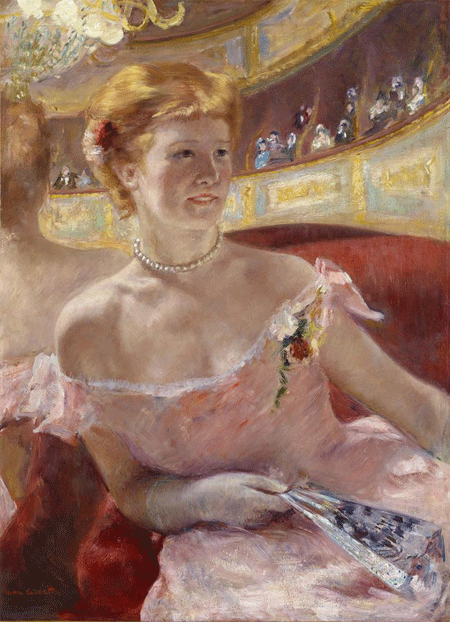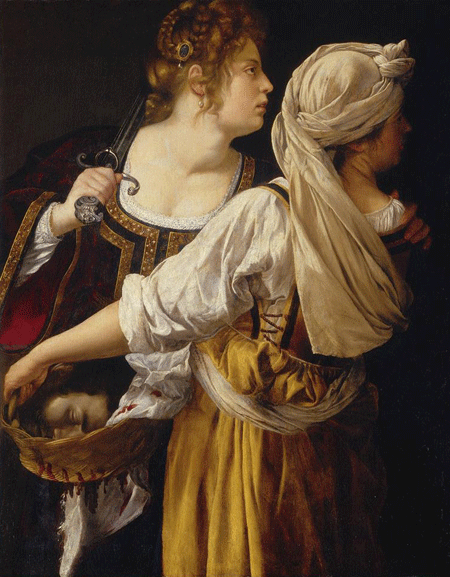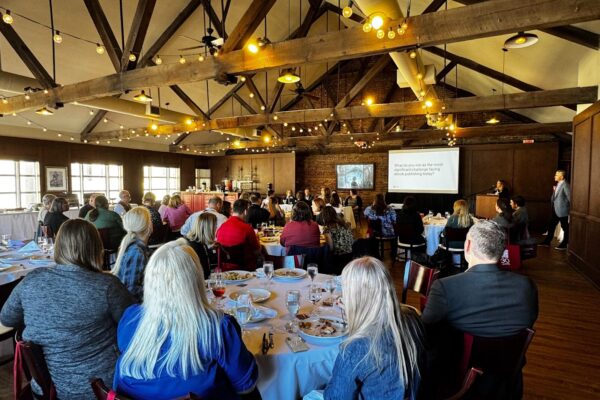
Katherine Murrell
Instructor of Art History
Milwaukee Institute of Art & Design
In my class on women artists from the medieval period onward, one of the first activities students were asked to do was to work in small groups and write a list of ten female painters or sculptors active before 1950, but without looking for information online. Many minutes elapsed, and the group with the longest list only had eight names. It was a sobering realization that despite the hundreds of female practitioners of art, relatively few are commonly known. This oversight is apparent on many websites hosting libraries of images, but Artstor is a notable and praiseworthy exception.
The tools available on Artstor make researching and organizing presentations a streamlined delight, but the breadth and depth of its visual resources make it an outstanding library. The nearly 400 images from artist Judy Chicago are an exceptional example of this. Chicago’s landmark work, The Dinner Party, is widely represented in art history survey textbooks, and was a touchstone for our class. The studio photographs and other documentary images associated with the piece, and detailed images of various place settings, help vividly illustrate the scope of this collaborative and historic work.
Context of a smaller, older work was explored through the 12th-century image of Hildegard von Bingen, experiencing a vision like a fiery flame. This is another picture often shown in survey textbooks, but the Artstor collection includes the facsimile page from her Liber Scivias, showing the illustration as accompanying its text, in addition to many other richly illustrated folios.
Artists of significant accomplishment such as Sofonisba Anguissola, Lavinia Fontana, Artemisia Gentileschi, and many others, are represented with plentiful images. The extensive material offers valuable opportunities for examining recurring subjects of interest, such as the Jewish heroine Judith. Artists’ self-portraits are another significant topic for discussion. Angelica Kauffman, a founding member of London’s Royal Academy of Art, created an eloquent self-portrait where she chooses between her loves of art and music, an image that still makes a powerful statement today about professional commitment.
Resources concerning the life and career of Rosa Bonheur include numerous paintings, studies, sketches, and photographs. Of particular note in the Artstor collection is a permit for which she regularly applied to French authorities to wear men’s clothing in public, in order to gain easier access to male-dominated settings not readily open to women.
The quantity of images for many artists is impressive, but also the details and installation views of works. The story quilts of Faith Ringgold come alive with close-ups of image and text, and the monumental scale of Louise Bourgeois’ spiders are all the more impressive for the exhibition images.
While putting together my course, Artstor has been an invaluable partner, providing numerous images and source documents, and helping my students gain an expansive sense of the contributions of women artists in the present and past centuries. The field of art history, and the experience in the classroom, is undeniable richer for this resource.





